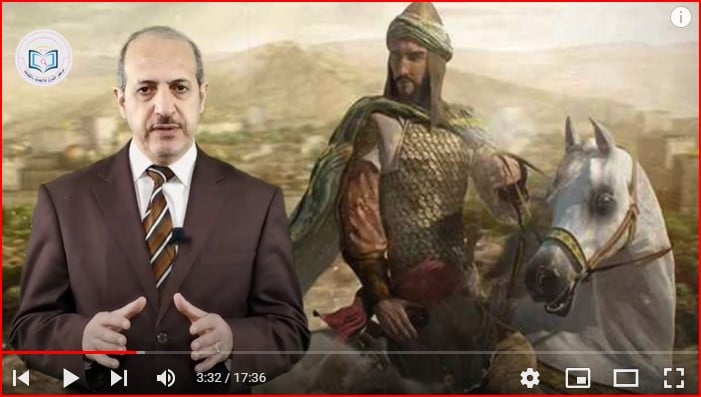Lecture entitled “The Ayyubid Period and the Liberation of Jerusalem”
Ayyubid state and Jerusalem:
The state of the Ayyubid state and Jerusalem after the death of the Ayyubid Sultan Salah al-Din al-Ayyubi:
With the death of Salah al-Din al-Ayyubi and then the death of his just brother in 1218 AD, the Crusaders returned to threaten the Levant, The situation was exacerbated by rivalries and disputes between the sons of the Ayyubid house, which threatened the future of the holy city for more than a century. Most of the Muslim population and some Eastern Christians have fled the city to new places in search of safety and security.
Jaffa Agreement
Jaffa Agreement 1229 :
In 1229, The city of Jerusalem has entered a dangerous stage, Because of the differences and rivalries between the sons of the Ayyubid House in Damascus and Cairo, which weakened the Islamic Front, Sultan al-Kamil made a dangerous decision. Full negotiations with the German Emperor Frederick II ended with the handover of the Holy City to the Emperor except for the Temple Mount area, Al-Kamil’s main pretext was his inability to defend the city.
He continued in a lecture entitled “The Ayyubid Period and the Liberation of Jerusalem”
Terms of the Jaffa Agreement 1229:
-
The agreement was set at ten years and five months.
-
The surrender of the city of Jerusalem to Frederick II, provided that its walls are not renewed.
-
The villages around Jerusalem remain in the hands of the Muslims.
-
Al-Aqsa Mosque remains in the hands of Muslims, provided that it does not carry weapons there.
-
In addition to Jerusalem, the Crusaders are given Bethlehem, Nazareth, Sidon, and a road from Jerusalem to Jaffa.
Dawood Al , Nasser
Al-Nasir Daoud and Al-Khwarizmia regain Jerusalem from the Crusaders:
The Crusaders’ control of Jerusalem extended ten years from 1229 AD to 1239 AD, But they could not establish their authority in it, In 1239 AD, Al-Nasir Daoud Al-Ayyubi, King of Karak, was able to recover the city. Four years after its liberation, the Crusaders returned to Jerusalem, But before they settled in it, the algorithm recovered it in 1244 AD, Thus, the Holy City was definitively returned under Islamic rule.
Administrative Organizations
Administrative organizations in Jerusalem in the Ayyubid era:
The Ayyubids in Jerusalem, after its liberation from the Crusaders, introduced several administrative organizations, Among them:
-
Mandate and Governor: His mission is to manage and reconstruct the city and lead the pilgrimage caravans.
-
Attorney: Acting on behalf of the governor in the administration of Jerusalem during his absence.
-
Sharia Administrator: To take care of endowments and monitor the responsibility of endowment functions
-
Eliminate: On the Shafi’i school of thought.
-
Agent of Bayt Al Mal: Undertakes the sales and purchases of Bayt al-Mal.
He continued in a lecture entitled “The Ayyubid Period and the Liberation of Jerusalem”
Urban Manifestations
Ayyubid urban manifestations:
After the liberation of the Holy City, Sultan Salah al-Din al-Ayyubi carried out the following urban reforms:
-
He cleansed Jerusalem of the urban additions erected by the Crusaders and removed the cross from the honorable Dome of the Rock, He also removed drawings, photographs and all the tombs of the Crusaders adjacent to the Temple Mount.
-
He brought the minbar made during the reign of Nur al-Din Zengi and placed it in the Al-Aqsa Mosque.
-
Bimaristan established a hospital for patients in a church in the tanning district near the Church of the Holy Sepulchre.
-
He rebuilt the city wall and restored its walls.
-
Establishment of some schools.
Ayyubid schools
The most famous Ayyubid schools in Jerusalem:
-
School Validity: To teach Shafi’i jurisprudence, Built in the Church of St. Anne 1192 AD
-
School Preference : Established by the best king, the eldest son of Saladin, on the Maliki school of thought, It is located in the Moroccans Quarter.
-
Hanafi School and Language School: To teach the Arabic language, which was called the grammar school and the Badriya school located in the center of the old city, They are schools established by King Isa bin Al-Malik Al-Adel.







